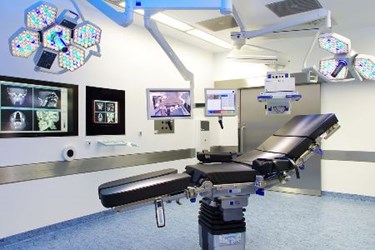Report: Medtech Market Consolidation Tempered By Flat Growth, Decreased Early-Stage Financing
By Jof Enriquez,
Follow me on Twitter @jofenriq

Despite record M&A dealing and IPO activity, as well as a boost in R&D funding in the past year, the global medtech industry is experiencing tepid organic growth and a slowdown in early-stage financing that could threaten innovation, a new report indicates.
In 2014, public medtech companies worldwide grew just two percent, with total revenues of $341.8 billion, lower than the four percent growth rate recorded in 2013, according to the EY Pulse of the Industry report. This marks the second consecutive year the industry has posted single-digit top-line growth. United States medtech companies' aggregate top line increased only three percent in 2014 to $222.5 billion, compared with a four percent increase in 2013. The European medtech market mirrored that of the U.S., sliding one percent year-on-year to $119.3 billion.
This despite continued industry consolidation in the past 12 months, between July 2014 and June 2015, which saw the number of M&A deals worth less than $10 billion reaching a four-year high, the EY report states. In the same period, there were 16 deals worth at least $1 billion. This is documented in a separate report by Evaluate Ltd., which states that total medtech M&A deal values rose 166 percent, to $84 billion, in the first half of 2015.
According to EY, R&D investment increased for the fifth year in a row, up six percent in 2014 after growing seven percent in 2013. IPO activity by medtech companies reached an all-time high in 2014, with 40 medtech companies going public. Between July 2014 and June 2015, 43 companies debuted on exchanges in the U.S. and Europe, raising close to a cumulative $ 2.3 billion, which is $800 million (57 percent) higher than the previous 10-year high, which was achieved in the previous 12-month period.
The record infusion of capital from IPOs and debt financing in the past year is hardly sustainable, though, as the report states "even wide-open windows eventually close." Instead, the EY report recommends that, in order to accelerate sustainable, organic growth, medtech companies should invest more in innovation and do so across the industry's value chain. However, the investor base willing to put its dollars into early-stage companies is eroding, putting the long-term sustainability of the industry and its ability to re-ignite organic growth into question.
"Fewer medtech start-ups raising less capital and fewer venture investors willing to place bets on fledgling medtech companies may cause lasting damage to the innovation value chain," states the report.
According to EY, early-stage funding fell in absolute terms to less than $1.3 billion in 2014, down from nearly $1.6 billion the prior year. During the 12-month period from July 2014 to June 2015, only 29 percent of venture investments went to companies raising their seed, first, or second rounds, as opposed to 37 percent in the prior 12-month period. In contrast, late-stage companies received more than $3.1 billion in venture capital, or 71 percent of total investment. Venture capitalists pumped a record $57 billion into U.S. companies in 2014, but just 5.9 percent of those investments were in medtech companies. In the first half of 2015, medtech companies have pulled in only 3.8 percent of venture dollars, according to the report.
“Over the last 12 months, the disparity between the ‘haves’ and the ‘have-nots’ in the medtech sector has grown increasingly stark. Even in this buoyant fundraising and deal-making environment, there remains a persistent gap in the type of early-stage venture capital funding required to support an innovative medtech ecosystem," stated Glen Giovannetti, EY's Global Life Sciences Leader, in a press release. "This lack of funding is partially attributed to an increasingly uncertain reimbursement climate, exacerbated by the repetitive nature of medtech innovation, and the resulting pressure for companies to find new ways to demonstrate the value of their products.”
